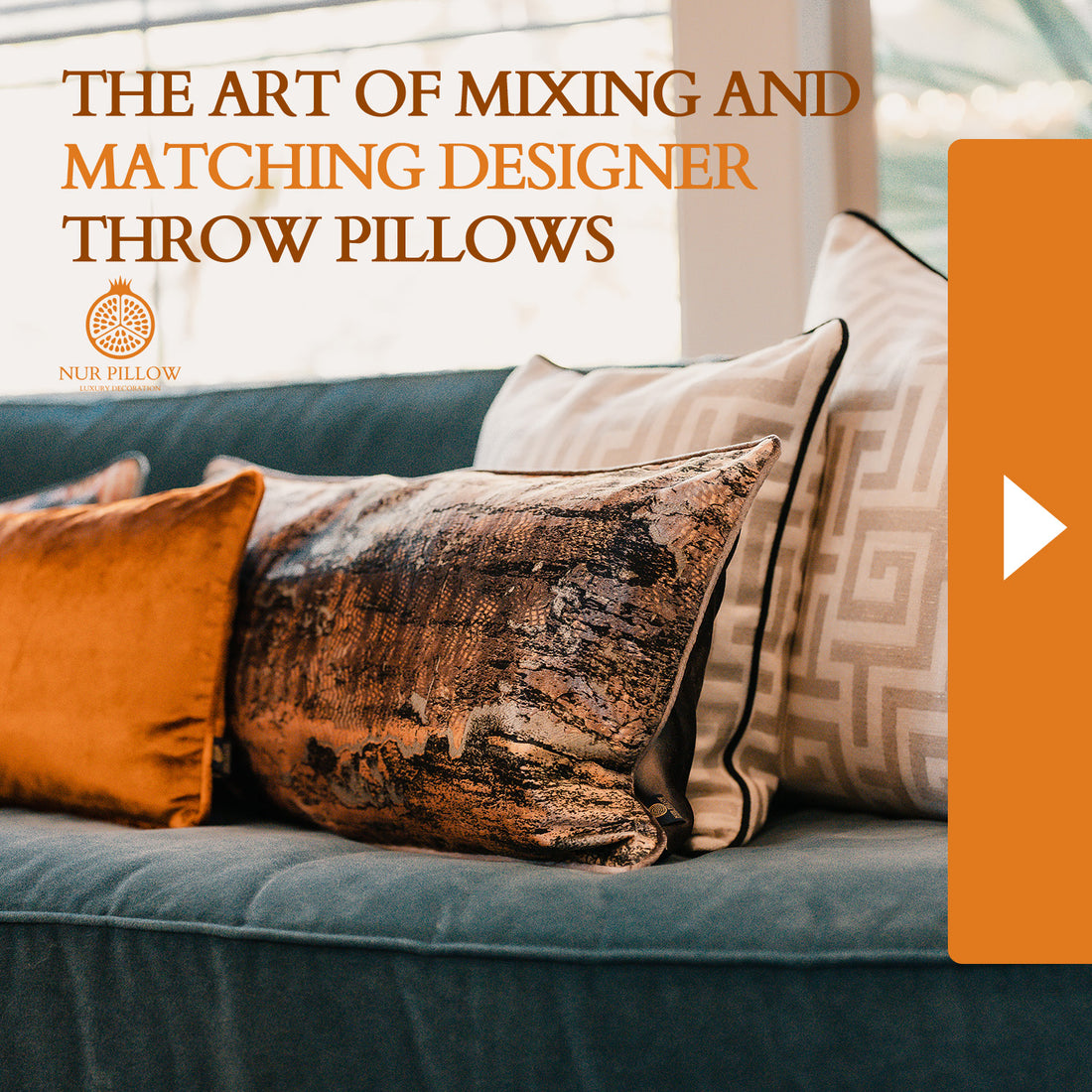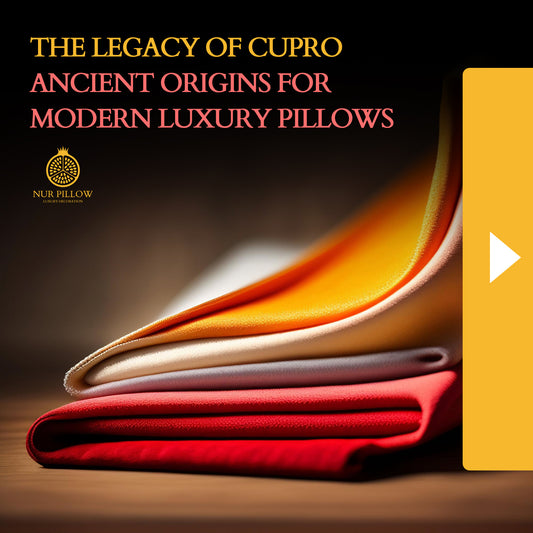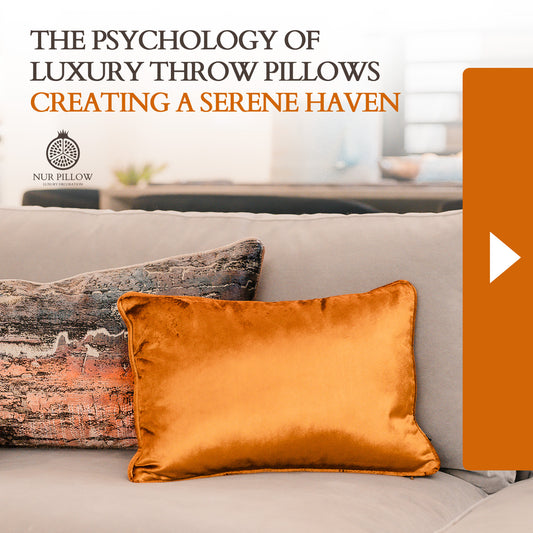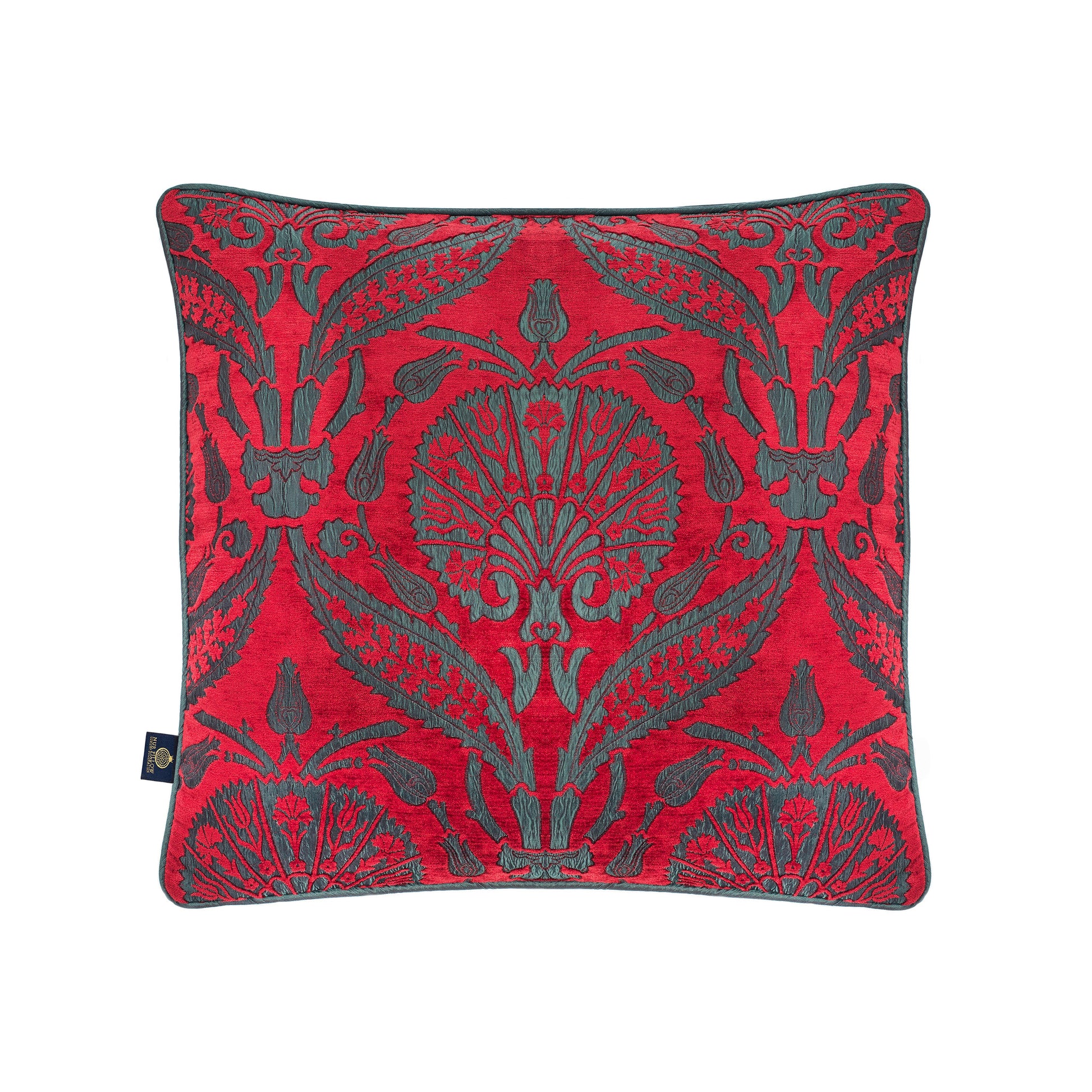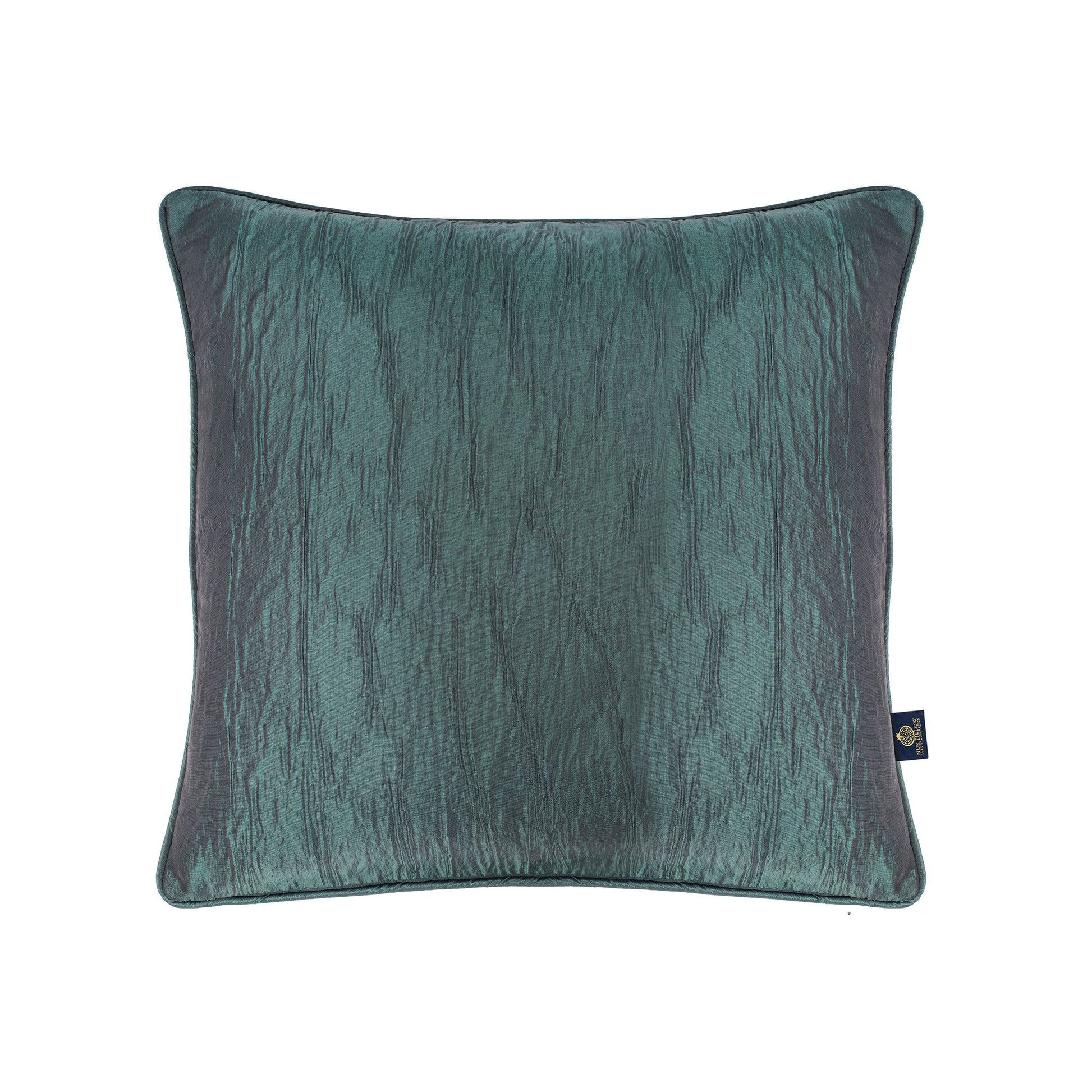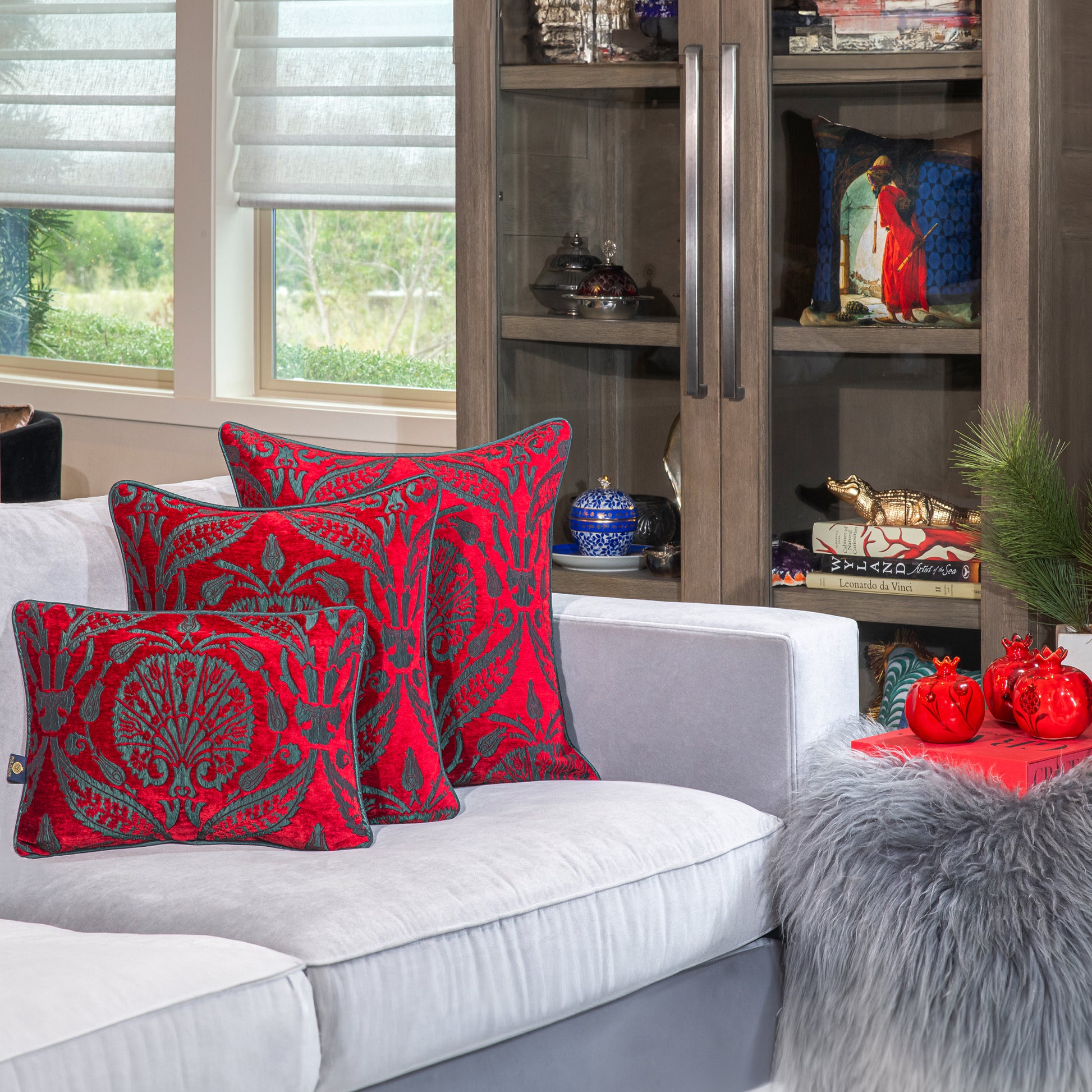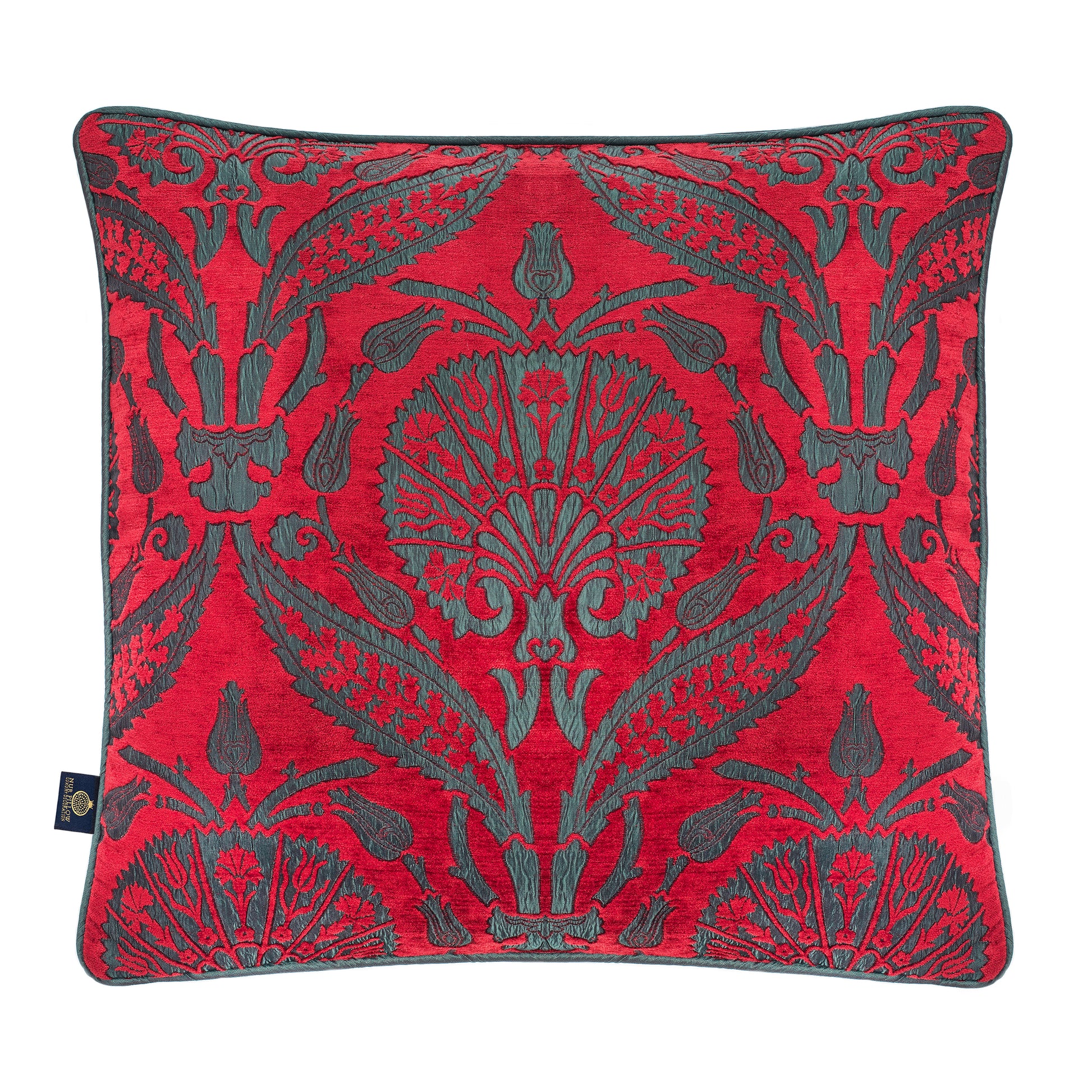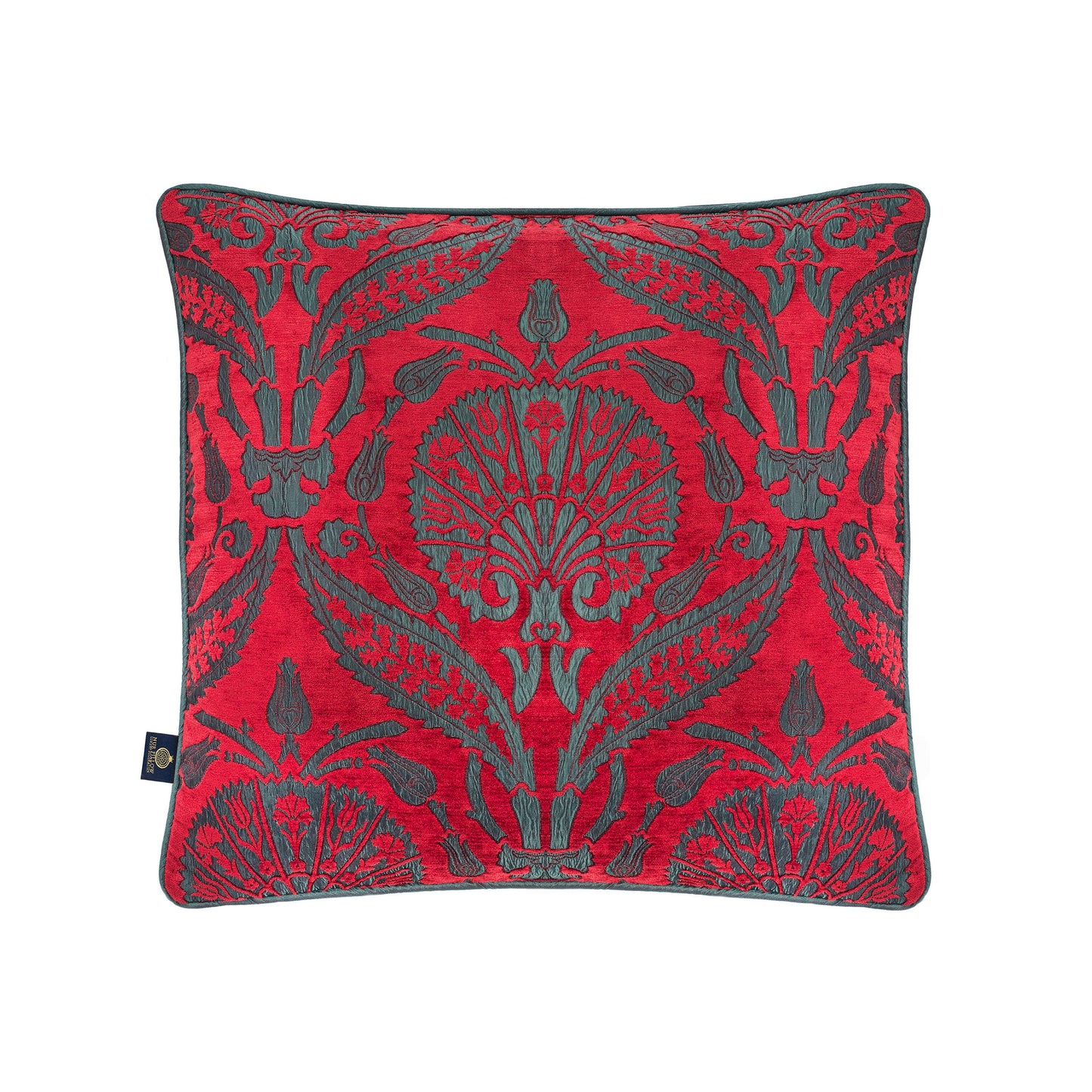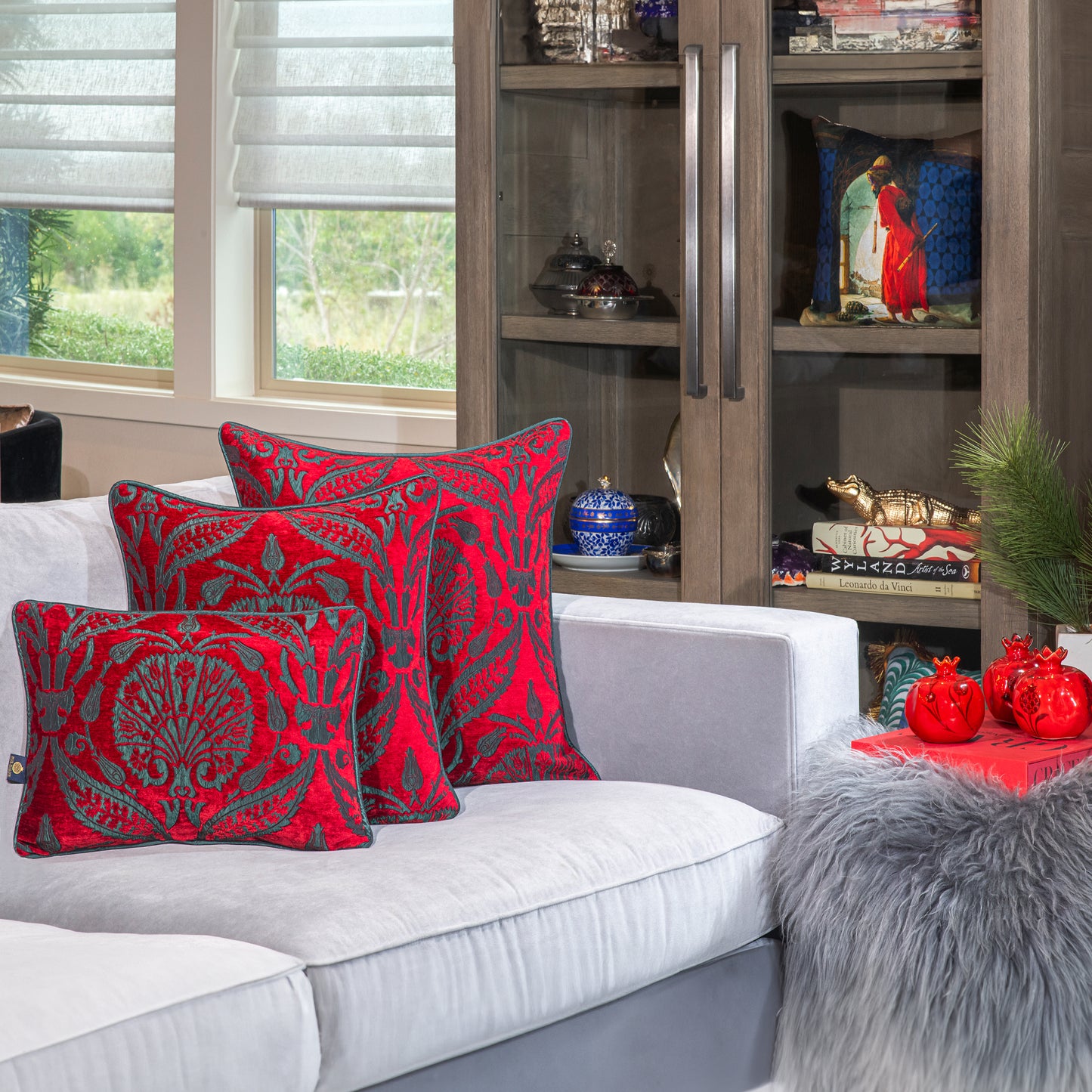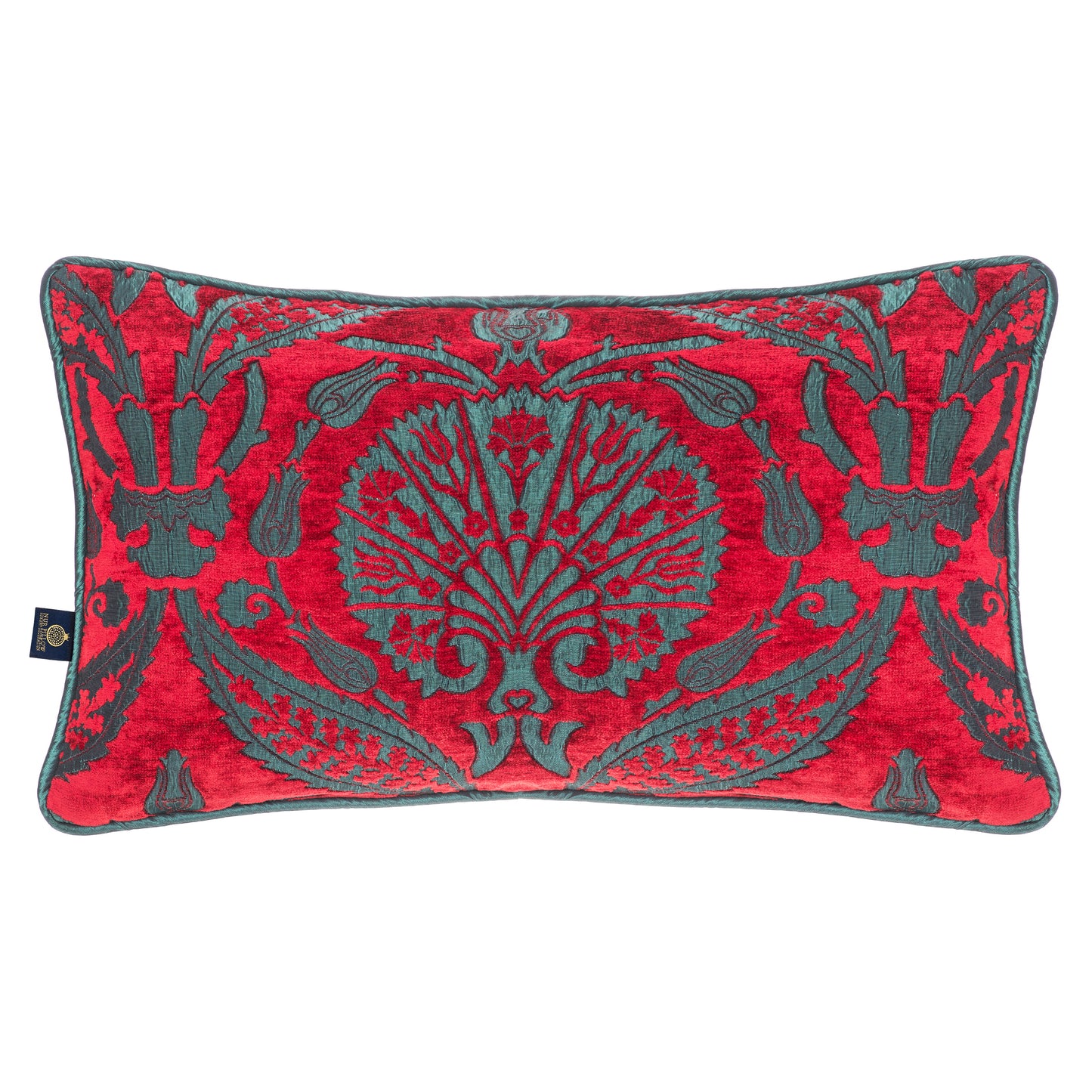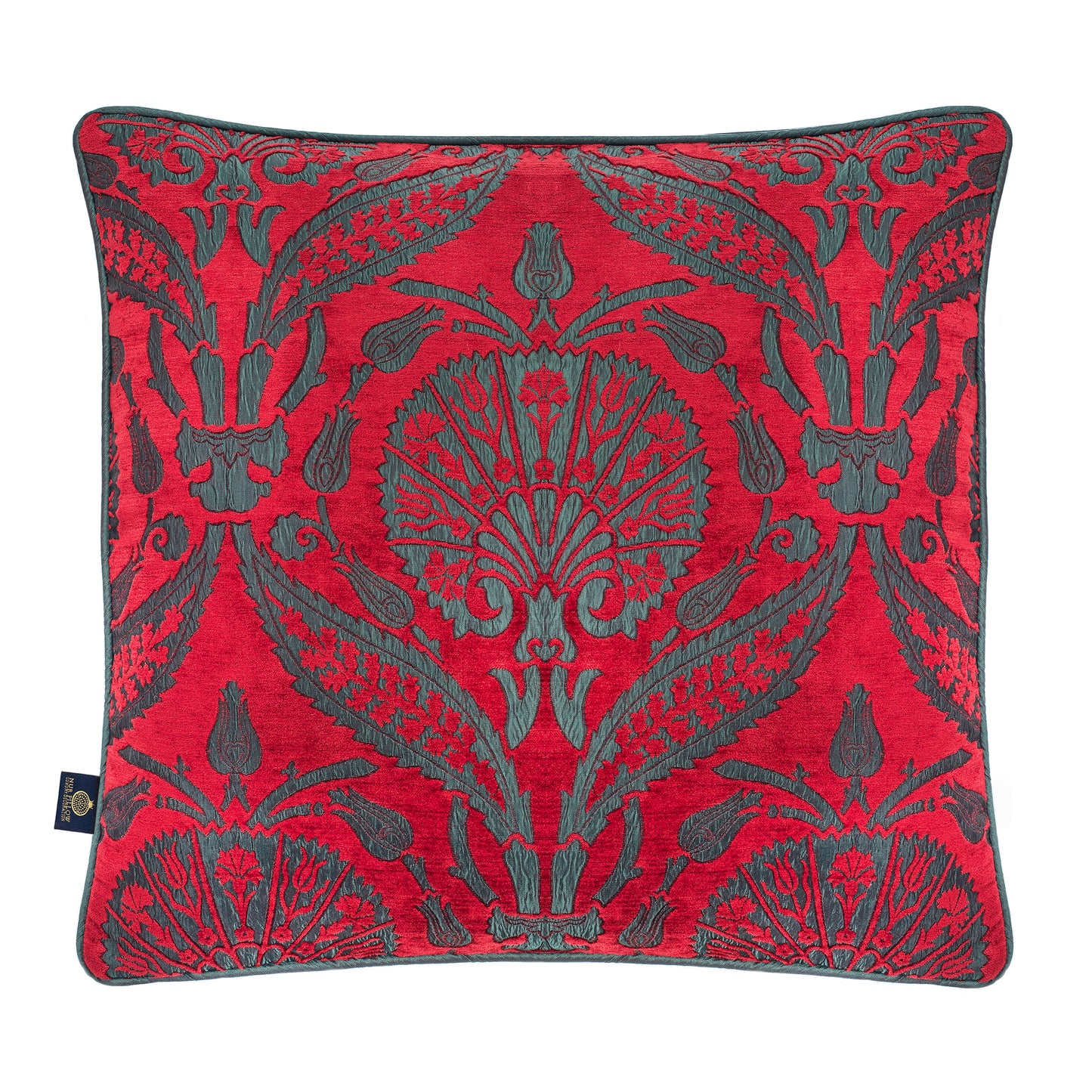Decorating is a bit of art and a bit of science. Don’t believe us; learn to mix and match your designer throw pillows with the best formulas.
One of the simplest ways to update the look of your living room, family room, or bedroom is with the help of decorative throw pillows. It would be a waste to settle for the safety of two or three plain-colored cushions, or even worse, to stick with the pillows that came with your sofa when so many lovely options are available for such a low price.
Remember, first and foremost, that your throw pillows need not be identical. You can obtain a more put-together and fashionable look if they don't. The following advice can help you create a coordinated but not matchy-matchy appearance with pillows, even if you're not confident in your abilities to pick them.

It takes a trained eye to coordinate different styles of decorative pillow covers successfully. Nonetheless, the space may still seem wonderfully polished and modern even if no two pillows have the same color, pattern, or design. Let’s take a look at the best formulas for decorating with harmony, using your favorite throw pillows.
The Rule of Three
Remember we mentioned the formula at the beginning of this article? Well it is time to explain. With the rule of three, you can combine the best colors, patterns, and textures to create a rich aesthetic look. This will save you so much time; you won’t even believe it. The Rule of Three is an ideal method to guide your selections and simplify the procedure if you don't have the time or interest to explore or shop extensively.
Rule Number One: Three Colors
When you are making the selection of your pillow design ideas, the first thing you need to do is choose a color theme to work with. Even if they are all different, your cushions will appear to belong on the sofa or bed if you choose colors from the rest of the room to use as inspiration.

It is usually a good idea to choose three colors that work well together and create your throw pillow color palette from there. This will ensure that your pillow design have a harmonious appearance. For instance, to construct your color narrative, you may choose the color of the walls, a color from the carpeting, and a piece of artwork that will be hung on the wall. Be sure that one of the colors on the throw pillows you choose to incorporate into a bedroom decor is already present in the bedding you have chosen.
Here are some best color options that work together:
- Dark green, rich gold, and magenta
- Indigo, crimson, pink
- Sage Green, Peacock Blue, and Gold
- Hues of red, orange, and green at their darkest
- Comprising of magenta, violet, and a mustardy yellow
Second Rule: Pick 3 Patterns
Throw pillow designs should be chosen carefully to provide a sense of harmony. If you pick with too many different designs, no amount of matching colors will make the cushions look cohesive. Remember that "designing with throw pillows" doesn't imply you just threw them together; going with too many patterns will lead to a chaotic look. In general, I advise picking no more than three distinct designs.
Geometric and organic patterns are the two most common types of designs. Stripes, plaids, and other shapes you learned about in elementary school geometry are examples of geometric patterns. Botanical, abstract, and floral designs are all examples of organic patterns.

Doing things slowly will help you determine how your patterns will work together. Choose one design you adore, ensuring it includes several hues from your color narrative, and then supplement it with a second design if you feel it lacks depth. Stripes (geometric), florals (organic), and solids (non-patterned) are a tried-and-true formula that anybody can follow.
If you are not sure which patterns go together, we got you:
- One dotted, one knitted, and one chevron
- One geometric, one geometric, one solid color
- One with leopard print, one with solid bold color, one with abstract shapes
Rule Number Three: Chose Three Pattern Sizes
While choosing patterns, it's essential to consider both the pattern's size and style. The three significant patterns will compete with one another rather than complement one another. Choose designs with varying scales that stand out against one another. That way, the pillows will work together and not against one another.

Pillows with medium-sized geometric patterns, such as stripes or a basic diamond, work well when paired with those with huge organic floral patterns, like palm leaves. The third and final motif should be tiny and have either a geometric or organic shape. This ensures there will be no clashing between the patterns.
The largest print in your group should serve as your lead pattern, followed by a print of medium sizes, such as a stripe or tiny houndstooth. Hence, the third design should be the most understated: a solid color with an attractive texture, a dotted swiss, or a delicate tone-on-tone pattern like a damask stripe.
Do not Forget Different Sizes
Pillow sizes matter when furnishing a bed or couch for visual effect. First and foremost, you need to make sure that the pillows come in appropriate sizes for the size of the furniture you are accessorizing. While comfort is certainly a driving factor in the decision to include pillows, style shouldn't be overlooked. If you aren't careful about proportions, your cushions may become lost amongst your furnishings, defeating the purpose of your decor.
When styling a sofa, a simple strategy is to start with the largest cushion or pillows outside, work your way inside with smaller pillows, and end with an accent lumbar pillow in the center. Hence, the final product will have a more polished, unified, and symmetrical appearance. Either place a giant pillow next to a medium-sized cushion, with a lumbar pillow covering the two; this will draw the eye to the corners and provide the impression of symmetry.
Texture Can Be Mixed and Matched Too!

It's not very interesting to look at a bunch of printed pillows. Even if they have intriguing designs, pillows with the same texture might make your area appear like it was put together in a "bed in a bag" and not as though you carefully picked it for the space. Your house should reflect who you are; details such as these are as significant as the major statement items you choose to display. Be sure that in addition to mixing and matching the patterns and colors of your throw pillows, you are mixing and matching the different textures you employ.
Texture may be created using various techniques, such as cable knitting, dense needlework, or plush velvet throw pillow. Each makes a statement for the eyes and invites you to snuggle into them because of how comfortable they are. Try a classic southwest design instead of something more modern for your geometric cushion. Choose a pillow that does not simply have a design printed but has the colors weaved together instead. Because of the texture, the cushion will have a welcoming appearance and provide some aesthetic appeal.
Throw Pillows in Odd Numbers for Modern Decoration
It's a lot of fun to play around with arranging throw cushions to improve a room's aesthetic. Odd numbers are your best choice if you want to have a stylish and sophisticated appearance. Utilizing three or five pillows instead of two or four may provide a more interesting arrangement. This is because the human eye finds a feeling of balance, asymmetry, and natural harmony in odd numbers.
The size and shape of the pillows should also be considered when placing decorative pillows. Fewer, bigger cushions might provide a neater, more put-together look than many smaller ones. In this manner, you may prevent the confused look that might come from using a bunch of little throw pillows. If you follow these guidelines, you'll be able to arrange your throw pillows in a contemporary, chic, and artistic way.

Even Numbered Cushions for Traditional Look
Having an even number of matching pillows helps establish symmetry, providing a feeling of calm and tranquility. Use two identical square pillows, one on either end of a sofa, for a symmetrical and harmonious look. Similarly, a neat and tidy appearance may be achieved by placing eight matching pillows on a bed, two on each side.
It's essential to select pillowcases that go well together aesthetically. Keeping them consistent across the room will give the impression of careful planning and design. Pillow covers might be boring if you don't add variety by mixing textures, patterns, and fabrics, but keeping the same shape and size is key.

